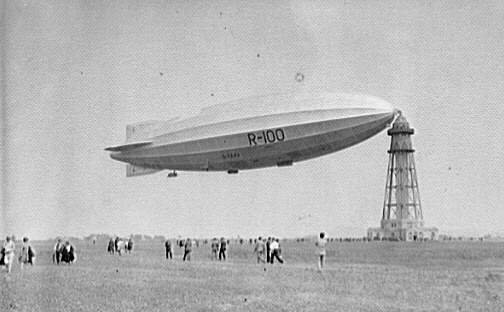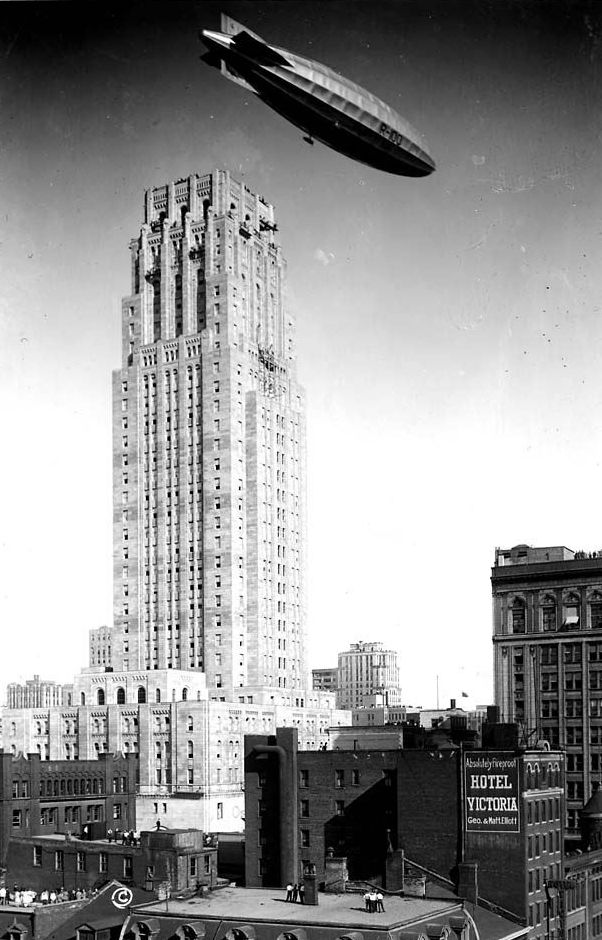A blog about everything that interests me. Woodworking, Engineering, Travel, Society, Architecture, Nature, Design and more.
20 November 2016
17 November 2016
07 September 2016
Almost worthless
Travelling through Egypt in the 90's I was given some of these notes by a bank. Despite appearances the denomination is not zero. The Arabic symbol for the number 5 looks a bit like a zero or an egg. This is a 5 piaster note, i.e. 5/100 of an Egyptian pound. I literally couldn't give it away - shops would not accept it, so it came back home with me in my wallet as a souvenir.
Currently the Egyptian pound is worth NZ 15c so this note is less than a cent in value.
Nice picture though. I think it is Queen Nefertiti (14th Century BCE).
Currently the Egyptian pound is worth NZ 15c so this note is less than a cent in value.
Nice picture though. I think it is Queen Nefertiti (14th Century BCE).
25 August 2016
Airships - the Airlander 10 and others
Yesterday the world's largest aircraft, the Airlander 10 crashed during its second test flight in Cardington, Bedfordshire, causing damage to the passenger module.
The project previously had cost and time overruns and technical issues before being bought off the US Army in 2013 by Hybrid Air Vehicles (one of the original subcontractors). Despite the difficulties, it has great promise. Due to the inert helium lifting gas it is relatively safe. Nobody was hurt in the accident.
At 92m long it is huge but it is far from being the world's largest aircraft of all time.
The R100, launched in 1929 in Yorkshire, UK was a massive 219m long and actually flew to Cardington, Bedfordshire on its maiden voyage. It was built by the private company Vickers, unlike its sister ship the R101, which was built by the British government.
The author Nevil Shute (A Town Like Alice, On the Beach) wrote extensively about his time as an engineer on the R100 in his autobiography Slide Rule, published in 1954, which I have a treasured copy.
In 1930 the R100 made a successful return trip across the Atlantic to Canada.
When its sister ship the R101 crashed in France later that year on its maiden voyage to India (killing 48 of the 54 people on board) the programme was scrapped.
Both the R100 and R101 are significantly smaller than that other well know airship the Hindenburg (at 245m long), but we all know what happened to that.
The project previously had cost and time overruns and technical issues before being bought off the US Army in 2013 by Hybrid Air Vehicles (one of the original subcontractors). Despite the difficulties, it has great promise. Due to the inert helium lifting gas it is relatively safe. Nobody was hurt in the accident.
| Photo by Philbobagshot via Wikimedia Commons |
At 92m long it is huge but it is far from being the world's largest aircraft of all time.
The R100, launched in 1929 in Yorkshire, UK was a massive 219m long and actually flew to Cardington, Bedfordshire on its maiden voyage. It was built by the private company Vickers, unlike its sister ship the R101, which was built by the British government.
The author Nevil Shute (A Town Like Alice, On the Beach) wrote extensively about his time as an engineer on the R100 in his autobiography Slide Rule, published in 1954, which I have a treasured copy.
 |
| US Library of Congress |
In 1930 the R100 made a successful return trip across the Atlantic to Canada.
 |
| R100 flying over Toronto |
Both the R100 and R101 are significantly smaller than that other well know airship the Hindenburg (at 245m long), but we all know what happened to that.
17 August 2016
Middle East Part 3
Despite this, travel in Syria was very safe and the people were friendly and hospitable. We were invited by local Kurds to a wedding celebration at a neighbourhood hall and later explored the Citadel and the Great Mosque (both damaged in the current civil war).
 |
| View from the Citadel, Aleppo |
 |
| Krak Des Chevaliers, Syria |
 |
| Tower of Elahbel, Palmyra. Destroyed in August 2015. |
 |
| Palmyra, Syria |
 |
| Palmyra, Syria |
16 August 2016
Where does the heat go?
We have a relatively new (2011) timber framed house. It was built to comply fully with the current New Zealand Building Code and has glass fibre wall and ceiling insulation and double glazed aluminium joinery - not particularly noteworthy when compared with colder parts of the world but quite suitable for New Zealand's temperate climate.
Here were the outside and inside temperatures last night at about 10pm:
Our only source of heating is a 20kW wood burner, which we light on most winter evenings for about four hours.
Under the concrete floor I used 50mm of black polystyrene, which is slightly warmer than the standard white variety.
When designing the house I was aware that it was also good practice to insulate the vertical face of the perimeter foundations, however this is difficult to construct for a few reasons and is not often done in New Zealand.
Last night I used an infrared camera attachment on my phone to take some photos.
Here you can clearly see heat radiating from the non-thermally broken door and window frames, but also from the small exposed strip of foundation wall.
From the inside of the house you can also clearly see heat escaping around the perimeter of the floor.
The path for the heat loss is as follows:
This issue is going to be addressed in the near future. We have a very comfortable home, but there is always room for improvement.
Incidentally, we have a concrete wall behind our wood burner which I designed as a form of heat storage. This slowly heats up from the fire and then radiates the heat after the fire goes out. This infrared photo was taken the next morning, about twelve hours after the embers had died. The wall and tiled hearth are still radiating heat into the room despite the wood burner being cold.
Here were the outside and inside temperatures last night at about 10pm:
Our only source of heating is a 20kW wood burner, which we light on most winter evenings for about four hours.
Under the concrete floor I used 50mm of black polystyrene, which is slightly warmer than the standard white variety.
When designing the house I was aware that it was also good practice to insulate the vertical face of the perimeter foundations, however this is difficult to construct for a few reasons and is not often done in New Zealand.
Last night I used an infrared camera attachment on my phone to take some photos.
Here you can clearly see heat radiating from the non-thermally broken door and window frames, but also from the small exposed strip of foundation wall.
From the inside of the house you can also clearly see heat escaping around the perimeter of the floor.
The path for the heat loss is as follows:
This issue is going to be addressed in the near future. We have a very comfortable home, but there is always room for improvement.
Incidentally, we have a concrete wall behind our wood burner which I designed as a form of heat storage. This slowly heats up from the fire and then radiates the heat after the fire goes out. This infrared photo was taken the next morning, about twelve hours after the embers had died. The wall and tiled hearth are still radiating heat into the room despite the wood burner being cold.
15 August 2016
Middle East Part 2
While travelling across Turkey towards Syria, we stopped in Cappadocia. Towns like Goreme and Nevsehir are carved out of the surrounding soft volcanic rock.
The region was a refuge for people fleeing political turmoil right back to Roman times. Then, it was Christians fleeing Roman persecution. The area has many churches built into caves.
Currently there are about 2,700,000 Syrian refugees living in Turkey, compared with about 600,000 in Germany and less than 10,000 registered in the United Kingdom.
The region was a refuge for people fleeing political turmoil right back to Roman times. Then, it was Christians fleeing Roman persecution. The area has many churches built into caves.
Currently there are about 2,700,000 Syrian refugees living in Turkey, compared with about 600,000 in Germany and less than 10,000 registered in the United Kingdom.
10 August 2016
Another break in transmission
More hand surgery and more plates and screws to fix the remainder of a very complex problem: A 30 year old injury and surgery combined with spontaneous fusing of the wrist bone, coupled with another fracture of the thumb bone. Fortunately I had an extremely good surgeon.
All going well I should be back to bike riding, woodworking, digging in the garden etc in six months or so. In the mean time it's back to one handed typing.
All going well I should be back to bike riding, woodworking, digging in the garden etc in six months or so. In the mean time it's back to one handed typing.
Labels:
auckland,
bmtstructural,
bruce tricker,
new zealand,
surgery,
thumb,
titanium,
wrist
24 July 2016
Middle East Part 1
In 1999 I travelled through Turkey, Syria, Jordan, Israel and Egypt on busses, boats and trains. In Turkey, the lira was suffering severe inflation and I became a millionaire for the first time.
One million Turkish lira was worth about NZ$10, although this had to be re-calculated daily over the month I was there. It has since been re-denominated by removing six zeros. Turkey was a pleasant and relatively safe country to travel through, with friendly people and some spectacular scenery.
One million Turkish lira was worth about NZ$10, although this had to be re-calculated daily over the month I was there. It has since been re-denominated by removing six zeros. Turkey was a pleasant and relatively safe country to travel through, with friendly people and some spectacular scenery.
27 June 2016
New Zealand's Relative Size Part 2
Here's another interesting comparison from thetruesize.com - New Zealand and South Africa at the same scale:
South Africa is over four times the land area and nearly twelve times the population of New Zealand, yet it occupies just the southern tip of this huge continent.
South Africa is over four times the land area and nearly twelve times the population of New Zealand, yet it occupies just the southern tip of this huge continent.
Subscribe to:
Comments (Atom)

















